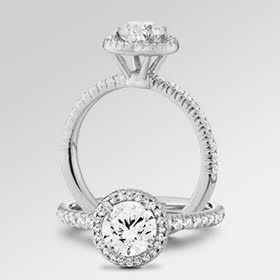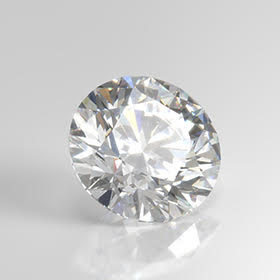The life cycle of a diamond (whether mined or lab-grown) isn’t just fascinating from a scientific standpoint; it also carries social impacts that are unknown to most. If you’re considering a mined diamond, then you probably know that it’s found in the upper crust of the Earth. But you may not have ever considered who is mining it and whether it’s done so in an ethical, sustainable way. In this blog, we’ll unpack what conflict diamonds are — and what you can do to make sure you’re purchasing an ethically-made, conflict-free diamond.
What are Conflict Diamonds?
Also known as “blood diamonds”, conflict diamonds are defined by the United Nations (UN) as “any diamond that is mined in areas controlled by forces opposed to the legitimate, internationally recognized government of a country and that is sold to fund military action against that government (source).” The UN first became involved in the diamond industry in the 1990s, during a tumultuous era of civil wars within western and central Africa. The rebel groups of Angola, the Democratic Republic of Congo, the Ivory Coast, and Sierra Leone controlled the mining and trade of diamonds, and then they used the funds to buy arms and war materials. The civilians of these countries suffered greatly, with roughly four million people being displaced or killed in the conflicts. In response to this tragedy, the UN worked with the diamond industry to create and enact the Kimberley Process in 2000.
What is the Kimberley Process?
In short, the Kimberley Process is an international resolution and commitment to remove conflict diamonds from the global supply chain. Here’s a quick rundown of how it works, according to the Kimberley Process website:
The Kimberley Process Certification Scheme (KPCS) imposes extensive requirements on its members to enable them to certify shipments of rough diamonds as ‘conflict-free' and prevent conflict diamonds from entering the legitimate trade. Under the terms of the KPCS, participating states must meet ‘minimum requirements' and must put in place national legislation and institutions; export, import, and internal controls; and also commit to transparency and the exchange of statistical data. Participants can only legally trade with other participants who have also met the minimum requirements of the scheme, and international shipments of rough diamonds must be accompanied by a KP certificate guaranteeing that they are conflict-free.
Critics of the Kimberley Process state that its scope is too narrow, as is its definition. For example, it only covers rough diamonds and doesn’t include diamonds that have been cut and polished. It also does not protect the broader range of human rights that are threatened by the diamond trade, like the funding of repression.
How Can I Ensure my Diamond is Conflict Free?
As you can conclude, the mining industry is rife with murky secrets and ethical concerns. A conflict-free mined diamond should be shipped with the Kimberley Process certificate, so make sure to ask the jeweler for it. However, if you’re concerned about the limitations like we are (more on that here), the only true way to ensure your diamond is conflict-free is to opt for a lab-grown diamond. A lab-grown diamond is the most ethical, conflict-free diamond available, and all of the diamonds we offer are created in the USA. When you opt for one of our diamonds, you ensure that no other humans were harmed as a result of its creation — and that’s something you can feel really good about as a consumer. Ensure you get a conflict-free diamond; start shopping our collections of lab-grown diamonds now >









